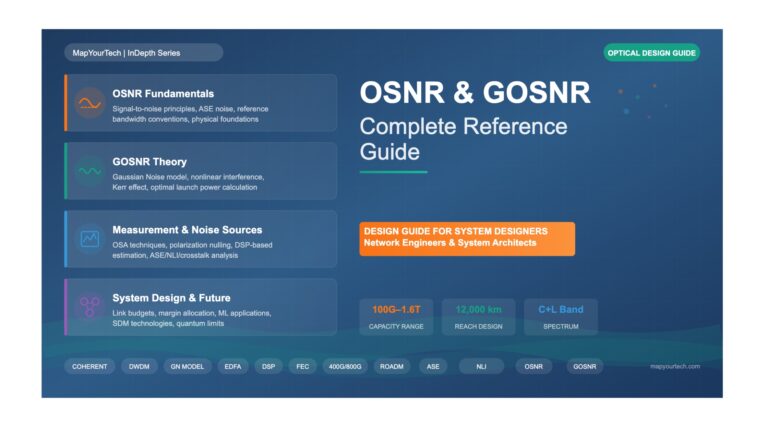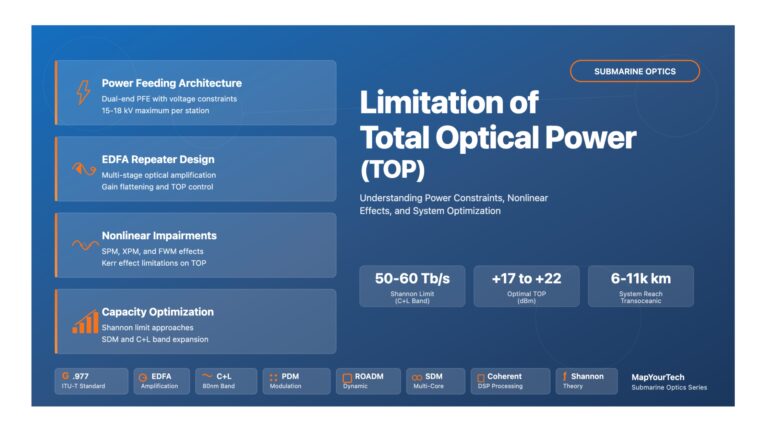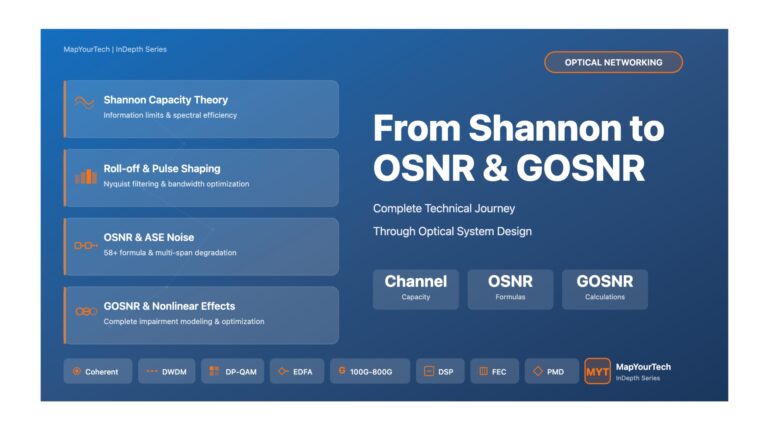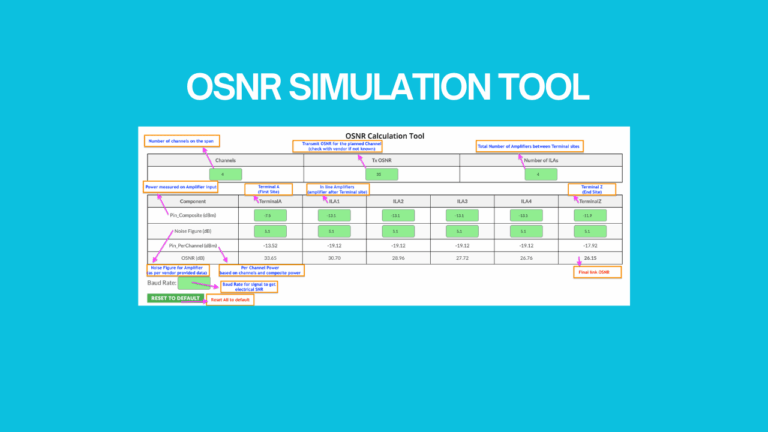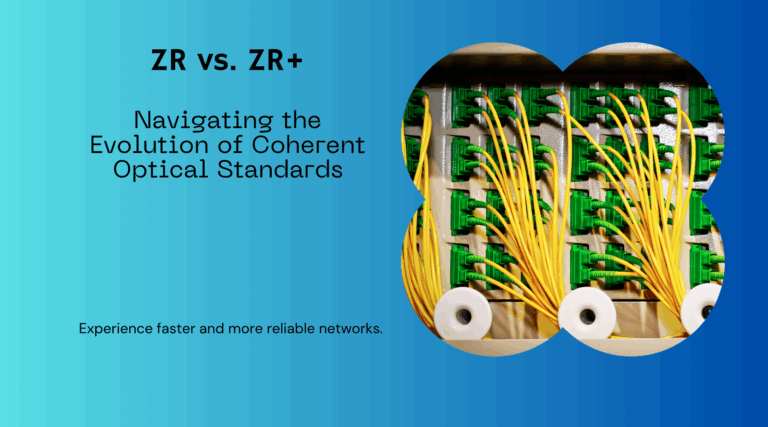HomePosts tagged “OSNR”
OSNR
Showing 1 - 10 of 18 results
OSNR and GOSNR Complete Reference Guide – Fundamentals OSNR and GOSNR Fundamentals of Optical Signal-to-Noise Ratio 1.1 Introduction to OSNR...
-
Free
-
December 12, 2025
Limitation of Total Optical Power (TOP) in Submarine Optical Networks – Comprehensive Visual Guide Limitation of Total Optical Power (TOP)...
-
Free
-
November 29, 2025
Complete Guide: Shannon Capacity to OSNR and GOSNR – Part 1 From Shannon Capacity to OSNR and GOSNR: A Complete...
-
Free
-
November 20, 2025
Methods to Pump More Bits in Less Spectrum in Optical Fiber Methods to Pump More Bits in Less Spectrum in...
-
Free
-
November 19, 2025
Part 1: Introduction to Link Budget Analysis – MapYourTech Tutorial Series Introduction to Link Budget Analysis Master the fundamentals of...
-
Free
-
November 13, 2025
Based on my experience ,I have seen that Optical Engineers need to estimate Optical Signal-to-Noise Ratio (OSNR) often specially when...
-
Free
-
March 26, 2025
In the world of fiber-optic communication, the integrity of the transmitted signal is critical. As an optical engineers, our primary...
-
Free
-
March 26, 2025
In this comprehensive exploration of 400G ZR and ZR+ optical communication standards, we delve into the advanced world of Probabilistic...
-
Free
-
March 26, 2025
When we’re dealing with Optical Network Elements (ONEs) that include optical amplifiers, it’s important to note a key change in...
-
Free
-
March 26, 2025
Explore Articles
Filter Articles
ResetExplore Courses
Tags
automation
ber
Chromatic Dispersion
coherent optical transmission
Data transmission
DWDM
edfa
EDFAs
Erbium-Doped Fiber Amplifiers
fec
Fiber optics
Fiber optic technology
Forward Error Correction
Latency
modulation
network automation
network management
Network performance
noise figure
optical
optical amplifiers
optical automation
Optical communication
Optical fiber
Optical network
optical networking
Optical networks
Optical performance
Optical signal-to-noise ratio
Optical transmission
Optical transport network
OSNR
OTN
Q-factor
Raman Amplifier
SDH
Signal amplification
Signal integrity
Signal quality
Slider
submarine
submarine communication
submarine optical networking
Telecommunications
Ticker

